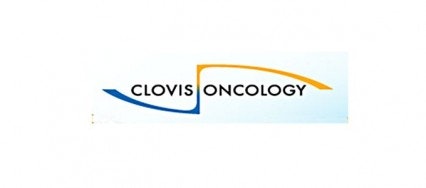Plenty of data was presented at the American Society for Clinical Oncology meeting over the weekend, causing the first set of ASCO pops, but Clovis Oncology Inc (NASDAQ:CLVS) looks like the clear winner, more than doubling today as the company presented data on its two cancer drugs rucaparib and CO-1686.
Solid data with competition
Rucaparib produced a clinical benefit in 89% of patients with ovarian cancer in a phase 1 trial. More impressive, seven out of seven patients with a mutation in BRCA saw disease control .
Rucaparib is an inhibitor of poly ADP-ribose polymerase, or PARP. Inhibiting PARPs function causes DNA damage, which should be repaired by the BRCA complexes. It makes sense, then, that tumors with BRCA mutations would respond better to rucaparib. Clovis Oncology Inc (NASDAQ:CLVS) plans to move into a new trial in the second half of the year to potentially identify other mutations beyond BRCA that might make the tumors sensitive to rucaparib.
Clovis Oncology Inc (NASDAQ:CLVS) isn’t the only one developing a PARP inhibitor, though. BioMarin Pharmaceutical Inc. (NASDAQ:BMRN)s presented data at ASCO for BMN673, where 82% of patients with BRCA mutations had a clinical benefit. There were 28 patients in that part of the trial, so the data could be more reproducible than rucaparib’s seven out of seven. BioMarin Pharmaceutical Inc. (NASDAQ:BMRN) also has solid data for breast tumors with BRCA mutations. Shares of BioMarin Pharmaceutical Inc. (NASDAQ:BMRN) actually fell a little today, but I think the data were widely expected to be positive, so there’s likely a little “sell the news” going on.
TESARO Inc (NASDAQ:TSRO) is also up today after announcing that it established a partnership with clinicians to run the phase 3 development of its PARP inhibitor, niraparib. The trial will enroll about 300 breast cancer patients with BRCA mutations, comparing niraparib to investigators’ choice of other breast cancer treatments.
And there are quite a few other PARP inhibitors in the clinic, so competition could be fierce if rucaparib makes its way through development and onto the market.
The driving force
As you can guess from the fact that it’s still using a code name, CO-1686 is a little further back in the clinic, but the data for the drug are having a larger impact on Clovis Oncology Inc (NASDAQ:CLVS)’s stock price today than rucaparib’s data.
In a dose-escalating clinical trial of lung cancer patients who no longer respond to Astellas and Roche‘s Tarceva, data for the top dose tested looked pretty good. There were only six patients in that group, but three had partial responses and one had stable disease. One of the six couldn’t be evaluated and the sixth one didn’t have the mutation in a protein called epidermal growth factor receptor that CO-1686 targets. Call it four out of four with a giant asterisk by the results.
The best part? Clovis Oncology Inc (NASDAQ:CLVS) hasn’t reached the maximum tolerated dose, suggesting that as it tests higher doses, the drug might work even better.
The biggest risk with Clovis Oncology Inc (NASDAQ:CLVS) — beyond that a lot can happen between phase 1 and FDA approvals — is that other new drugs come in and take Tarceva’s patients. About 50% of patients that take Tarceva develop the mutation that CO-1686 targets. If patients aren’t taking Tarceva because something better comes along, there won’t be as many patients for Clovis Oncology Inc (NASDAQ:CLVS) to treat.
The article Double Data, Double Stock Price originally appeared on Fool.com.
Fool contributor Brian Orelli has no position in any stocks mentioned. The Motley Fool recommends BioMarin Pharmaceutical Inc. (NASDAQ:BMRN).
Copyright © 1995 – 2013 The Motley Fool, LLC. All rights reserved. The Motley Fool has a disclosure policy.


